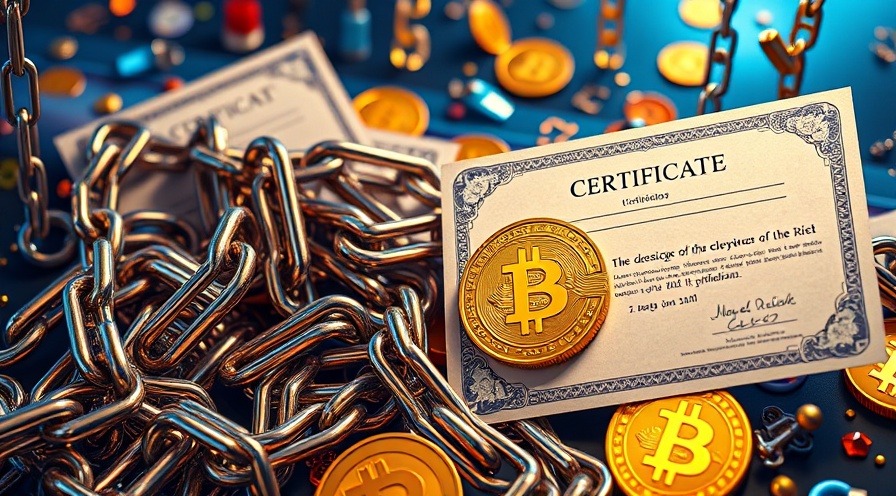
Chains, Certs, and Crypto: The Secrets Behind Blockchain & Digital Certificates – CompTIA Security+ SY0-701 – 1.4 🔐
Dive into how blockchain works behind the scenes and how digital certificates, CSRs, key revocation, and OCSP stapling keep things legit and secure.
TL;DR ⛓️🔏
Blockchain = an incorruptible digital ledger where data lives in blocks chained together with cryptography
Digital certificates are online IDs that prove you're you (or Amazon is actually Amazon)
Certificate Signing Requests (CSRs) initiate the identity proof process for digital certificates
Key revocation = killing compromised certs, fast
OCSP stapling = real-time certificate validity checks without the internet bottleneck
What the Heck is Blockchain Anyway? 🧱
Imagine a digital notebook where every page (block) contains a list of transactions. Once a page is full, it gets sealed, timestamped, and glued to the previous one. That glue? Cryptographic hashing.
Now imagine that notebook exists in thousands of identical copies across the globe. When someone writes on one, all others sync up automatically. That, my friends, is blockchain.
Immutable: You can’t edit a page once it’s sealed.
Decentralized: No single entity owns it (bye, data monopolies!).
Transparent: Everyone sees what’s written.
Used in:
Cryptocurrencies (Bitcoin, Ethereum)
Supply chains
Voting systems
Digital identity & certificates 👀
"Blockchain is the tech. Bitcoin is merely the first mainstream manifestation of its potential." — Marc Kenigsberg, blockchain evangelist

Enter: Digital Certificates (a.k.a. Your Website's Driver's License)
Digital certificates prove identity online and are a critical piece of the Public Key Infrastructure (PKI).
They include:
The entity’s public key
Digital signature from a trusted Certificate Authority (CA)
Expiration date
Owner identity details
Why do we need them?
Because without them, your device has no clue if it’s talking to your bank—or some shady Wi-Fi guy in a van named Craig.
How a Certificate is Born: Certificate Signing Requests (CSRs) 🍼
A CSR is like applying for a passport.
You generate a key pair (public/private)
You fill out some identifying info
You send it to the CA, who validates you and signs your public key
Then boom—certificate issued. You’re now officially someone online.
Whoops, We Got a Problem: Key Revocation & CRLs ❌
If a certificate gets compromised (hacked, expired, or misissued), it needs to be revoked ASAP.
This is where Certificate Revocation Lists (CRLs) come in. Think of them as "blacklists" for dead certs.
But CRLs can get chunky and slow, so enter...

OCSP Stapling: Real-Time Certificate Validity Checks 🔄
OCSP (Online Certificate Status Protocol) checks if a cert is still valid—without having to fetch a whole CRL.
Stapling lets the server include its OCSP response in the TLS handshake. Faster, leaner, and doesn’t expose your browsing to third parties.
Basically, it’s the digital version of a bouncer checking your ID before you even walk up.
Fun Fact: OCSP stapling is now standard for TLS 1.3 sites. Speed and security? Yes, please.
TL;DR Again For the Scroll-Happy 📜
Blockchain = secure, transparent, decentralized ledger
Digital certificates = online identity cards
CSRs = the application form for certificates
Key revocation & OCSP = how we kill and verify certs in real time
Final Thoughts: From Blocks to Trust, It's All About the Chain 🔗
Blockchain and digital certificates may sound like buzzwords, but they’re the pillars of modern trust online. From validating identities to securing data across decentralized systems, they form the actual Internet backbone (sorry, fiber optics).
Want to go deeper into PKI, encryption methods, and blockchain use cases in real life? Check out more articles and explainer videos right here. Your future cert exam—and your next interview—will thank you.
Now go forth and flex your knowledge like the cyber-wizard you’re becoming. 🔮
Security+, blockchain, digital certificates, CSRs, OCSP stapling, SY0-701, cybersecurity, PKI, IT certification
 Add Row
Add Row  Add
Add 




Write A Comment